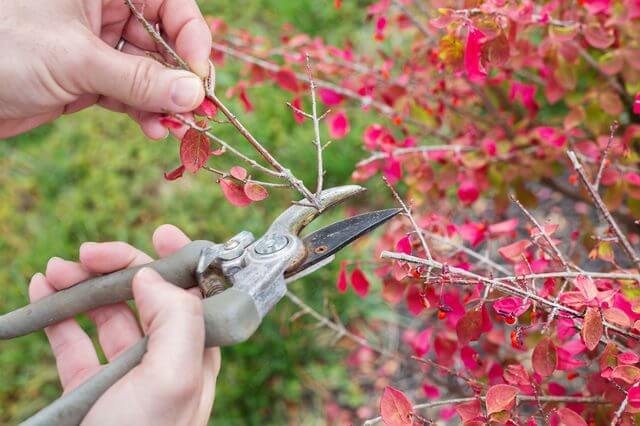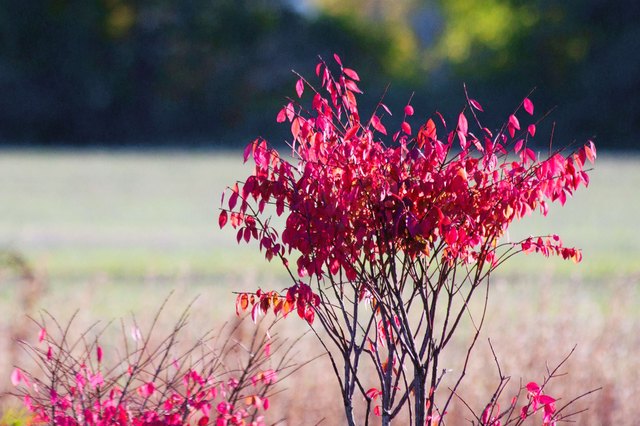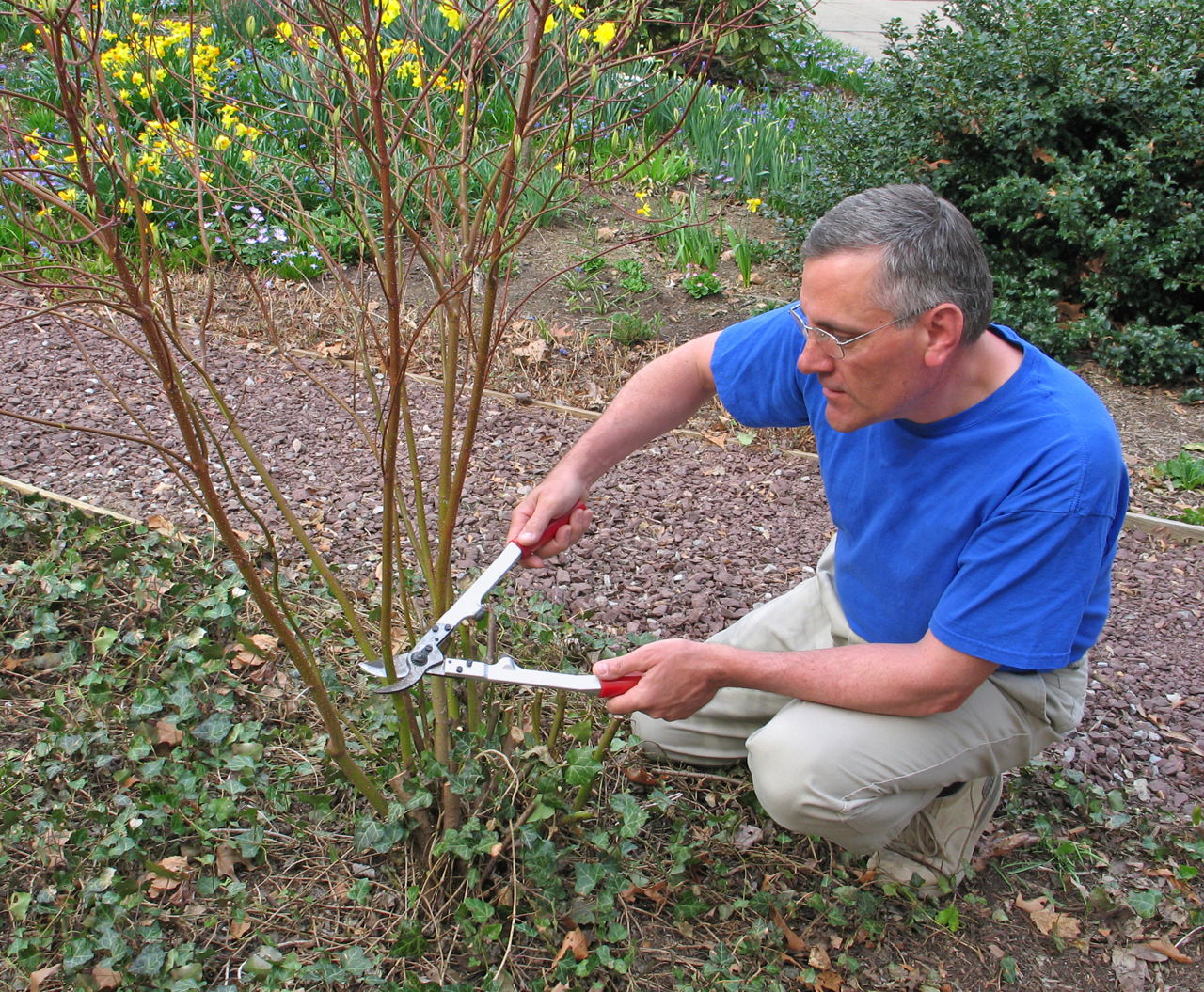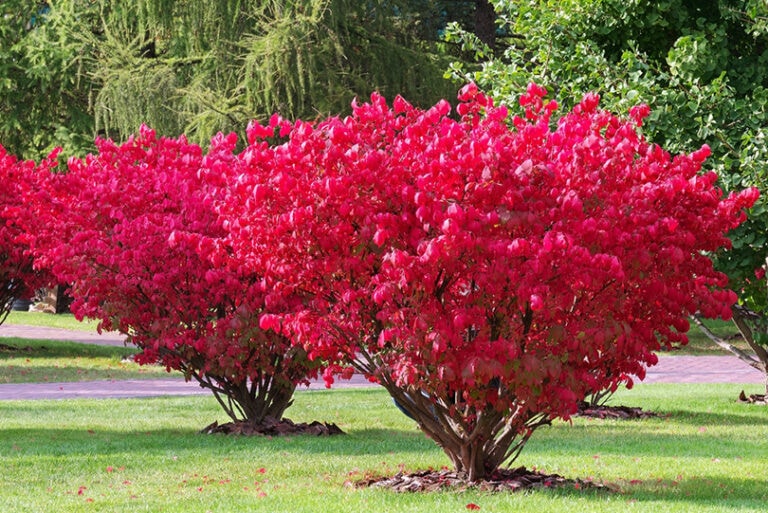Understanding the Importance of Timing
Pruning burning bushes at the right time is crucial to maintain their vibrant color and promote healthy growth. Burning bushes, also known as Euonymus alatus, are a popular ornamental shrub known for their brilliant red foliage in the fall. However, improper pruning can lead to reduced foliage and decreased flowering, making it essential to understand the best time to prune these shrubs. When is the best time to trim burning bushes? The answer lies in understanding the plant’s growth cycle and pruning at the optimal time to encourage healthy growth and maximize their ornamental value.
Pruning burning bushes at the wrong time can cause more harm than good. Pruning during the active growing season can stress the plant, leading to disease and pest issues. On the other hand, pruning during the dormant season can help promote healthy growth and encourage new foliage. By understanding the importance of timing, gardeners can prune their burning bushes with confidence, knowing they are giving their plants the best chance to thrive.
In addition to promoting healthy growth, pruning burning bushes at the right time can also enhance their ornamental value. By pruning in late winter or early spring, gardeners can encourage new growth and promote a fuller, more compact shape. This can be especially beneficial for burning bushes that are used as hedges or borders, as it can help maintain a neat and tidy appearance. By pruning at the right time, gardeners can enjoy the vibrant color and texture of their burning bushes throughout the growing season.
How to Prune Burning Bushes for Maximum Impact
Pruning burning bushes requires the right tools and techniques to achieve the desired shape and promote healthy growth. To prune burning bushes effectively, start by gathering the necessary tools, including a pair of sharp, clean pruning shears, loppers, and a pruning saw. It’s also essential to wear protective gloves and eyewear to prevent injury from thorns and debris.
Begin by removing any dead, diseased, or damaged branches, cutting them off at the base to prevent the spread of disease and encourage healthy growth. Next, identify any crossing or rubbing branches and remove the weaker of the two to promote air circulation and prevent damage to the plant.
When pruning burning bushes, it’s essential to make clean cuts just above a growth node, using a 45-degree angle to prevent water from collecting on the cut surface. This will help the plant heal quickly and reduce the risk of disease. For larger branches, use loppers or a pruning saw, making sure to cut outside the branch collar to avoid damaging the plant.
To shape and maintain the desired form, prune burning bushes in late winter or early spring, removing any weak or spindly growth. For compact varieties, prune more frequently to maintain a neat and tidy appearance. For standard varieties, prune less frequently, allowing the plant to grow and develop its natural shape.
By following these steps and using the right tools and techniques, gardeners can prune their burning bushes with confidence, achieving the desired shape and promoting healthy growth. Remember to prune at the right time, as discussed in the previous section, to maximize the impact of pruning and keep your burning bushes looking their best.
The Best Time to Prune Burning Bushes: A Seasonal Guide
Pruning burning bushes at the right time is crucial to maintain their vibrant color and promote healthy growth. The best time to prune burning bushes depends on the season, and understanding the plant’s growth cycle is essential to determine when to prune. In general, the best time to prune burning bushes is in late winter or early spring, before new growth begins.
Pruning in late winter or early spring has several benefits. It allows the plant to heal quickly, reducing the risk of disease and pest issues. It also promotes healthy growth, encouraging new foliage and flowers. Additionally, pruning in late winter or early spring helps to maintain the plant’s shape and size, making it easier to control its growth and promote a neat and tidy appearance.
On the other hand, pruning during the active growing season can be detrimental to the plant. Pruning in the summer or fall can stress the plant, leading to disease and pest issues. It can also reduce the plant’s ability to produce flowers and foliage, making it less attractive. Therefore, it’s essential to avoid pruning during the active growing season and instead prune in late winter or early spring.
When pruning in late winter or early spring, make sure to prune before new growth begins. This will help the plant heal quickly and reduce the risk of disease and pest issues. It’s also essential to prune only what is necessary, removing any dead, diseased, or damaged branches. This will help promote healthy growth and maintain the plant’s shape and size.
By pruning burning bushes at the right time, gardeners can promote healthy growth, maintain the plant’s shape and size, and encourage new foliage and flowers. Remember, the best time to prune burning bushes is in late winter or early spring, before new growth begins. By following this seasonal guide, gardeners can keep their burning bushes looking their best throughout the year.
Factors to Consider Before Pruning Your Burning Bushes
Before pruning your burning bushes, it’s essential to consider several factors to ensure you’re pruning at the right time and in the right way. One of the most critical factors to consider is the plant’s age. Young burning bushes, typically those under three years old, require more frequent pruning to promote healthy growth and development. On the other hand, mature burning bushes may require less frequent pruning, as they have already established a strong root system and can tolerate less maintenance.
Another factor to consider is the plant’s size. Burning bushes come in a range of sizes, from compact varieties that grow to be around 3-4 feet tall to standard varieties that can grow up to 10-15 feet tall. When pruning, it’s essential to consider the plant’s size and shape, as well as its growth habits, to ensure you’re pruning in a way that promotes healthy growth and maintains the desired shape.
The plant’s health is also a critical factor to consider before pruning. If your burning bushes are diseased or infested with pests, it’s essential to address these issues before pruning. Pruning a diseased or infested plant can spread the disease or pests to other parts of the plant, making the problem worse. Instead, treat the disease or pests first, and then prune the plant to promote healthy growth and recovery.
Finally, it’s essential to consider any potential pests or diseases that may be present in your burning bushes. Common pests that can affect burning bushes include aphids, spider mites, and scale, while common diseases include root rot, leaf spot, and powdery mildew. When pruning, be sure to inspect the plant for any signs of pests or diseases, and take action to address these issues before they become more severe.
By considering these factors before pruning your burning bushes, you can ensure you’re pruning at the right time and in the right way to promote healthy growth and maintain the desired shape. Remember, pruning is an essential part of burning bush care, and by doing it correctly, you can keep your plants looking their best throughout the year.
Common Mistakes to Avoid When Pruning Burning Bushes
Pruning burning bushes can be a delicate process, and making mistakes can lead to reduced foliage, decreased flowering, and even plant death. One of the most common mistakes to avoid is over-pruning. Over-pruning can stress the plant, leading to disease and pest issues, and can also reduce the plant’s ability to produce flowers and foliage. To avoid over-pruning, prune only what is necessary, removing any dead, diseased, or damaged branches.
Another common mistake to avoid is pruning at the wrong time. Pruning during the active growing season can stress the plant, leading to disease and pest issues, and can also reduce the plant’s ability to produce flowers and foliage. Instead, prune in late winter or early spring, before new growth begins. This will help the plant heal quickly and reduce the risk of disease and pest issues.
Using improper pruning techniques is also a common mistake to avoid. When pruning, make clean cuts just above a growth node, using a 45-degree angle to prevent water from collecting on the cut surface. This will help the plant heal quickly and reduce the risk of disease and pest issues. Avoid tearing or ripping the branches, as this can cause damage to the plant and lead to disease and pest issues.
Not considering the plant’s growth habits is another common mistake to avoid. Burning bushes have a unique growth habit, with new growth emerging from the tips of the branches. When pruning, consider the plant’s growth habits and prune in a way that promotes healthy growth and maintains the desired shape.
Finally, not monitoring the plant’s response to pruning is a common mistake to avoid. After pruning, monitor the plant’s response, looking for signs of stress, disease, or pest issues. If you notice any problems, take action quickly to address them and prevent further damage.
Pruning Techniques for Different Types of Burning Bushes
Burning bushes come in a variety of shapes and sizes, and each type requires a slightly different pruning technique. Compact varieties, such as ‘Rudy Haag’ and ‘Little Moses’, require more frequent pruning to maintain their shape and promote healthy growth. These varieties should be pruned in late winter or early spring, removing any dead or damaged branches and shaping the plant to maintain its compact form.
Dwarf varieties, such as ‘Dwarf Burning Bush’ and ‘Compacta’, require less frequent pruning than compact varieties. These varieties should be pruned in late winter or early spring, removing any dead or damaged branches and shaping the plant to maintain its shape. However, dwarf varieties may require more frequent pruning to control their size and promote healthy growth.
Standard varieties, such as ‘Euonymus alatus’ and ‘Burning Bush’, require the least frequent pruning of all. These varieties should be pruned in late winter or early spring, removing any dead or damaged branches and shaping the plant to maintain its shape. However, standard varieties may require more frequent pruning to control their size and promote healthy growth.
When pruning different types of burning bushes, it’s essential to consider the plant’s growth habits and prune accordingly. For example, compact varieties tend to grow more densely than standard varieties, and may require more frequent pruning to maintain their shape. Dwarf varieties, on the other hand, tend to grow more slowly than compact varieties, and may require less frequent pruning.
By understanding the different pruning techniques for various types of burning bushes, gardeners can promote healthy growth, maintain the desired shape, and enjoy the vibrant color and texture of these beautiful plants. Whether you’re growing compact, dwarf, or standard varieties, pruning is an essential part of burning bush care, and by doing it correctly, you can keep your plants looking their best throughout the year.
Post-Pruning Care for Burning Bushes
After pruning your burning bushes, it’s essential to provide proper care to promote healthy growth and recovery. One of the most critical aspects of post-pruning care is watering. Burning bushes need consistent moisture, especially after pruning, to help them recover from the stress of pruning. Water your burning bushes regularly, providing about 1 inch of water per week, either through rainfall or irrigation.
Fertilizing is also essential for post-pruning care. Burning bushes benefit from regular fertilization, especially after pruning, to promote healthy growth and recovery. Use a balanced fertilizer, such as a 10-10-10 formula, and apply it according to the manufacturer’s instructions. Avoid over-fertilizing, as this can damage the plant and lead to reduced growth.
Mulching is another important aspect of post-pruning care. Mulching helps retain moisture, suppress weeds, and regulate soil temperature. Apply a 2-3 inch layer of organic mulch, such as wood chips or bark, around the base of the plant. Keep the mulch a few inches away from the plant’s trunk to prevent damage.
Monitoring the plant’s response to pruning is also crucial. After pruning, keep an eye on your burning bushes for signs of stress, disease, or pests. If you notice any problems, take action quickly to address them and prevent further damage.
By providing proper post-pruning care, you can help your burning bushes recover from the stress of pruning and promote healthy growth and recovery. Remember to water, fertilize, and mulch your burning bushes regularly, and monitor their response to pruning to ensure they continue to thrive.
Tips for Maintaining Your Burning Bushes Throughout the Year
To keep your burning bushes looking their best throughout the year, regular maintenance is essential. Here are some tips to help you maintain your burning bushes:
Watering: Burning bushes need consistent moisture, especially during the growing season. Water them regularly, providing about 1 inch of water per week, either through rainfall or irrigation.
Fertilizing: Fertilize your burning bushes regularly, using a balanced fertilizer such as a 10-10-10 formula. Apply the fertilizer according to the manufacturer’s instructions, and avoid over-fertilizing, as this can damage the plant.
Pruning: Prune your burning bushes regularly to maintain their shape and promote healthy growth. Prune in late winter or early spring, removing any dead or damaged branches, and shape the plant to maintain its desired form.
Mulching: Mulch around the base of your burning bushes to retain moisture, suppress weeds, and regulate soil temperature. Use a 2-3 inch layer of organic mulch, such as wood chips or bark, and keep it a few inches away from the plant’s trunk.
Pest and disease control: Monitor your burning bushes regularly for signs of pests or diseases, and take action quickly to address any problems. Use organic or chemical controls as needed, and follow the manufacturer’s instructions for application.
By following these tips, you can keep your burning bushes looking their best throughout the year. Remember to water, fertilize, prune, mulch, and monitor your burning bushes regularly to promote healthy growth and maintain their vibrant color.








